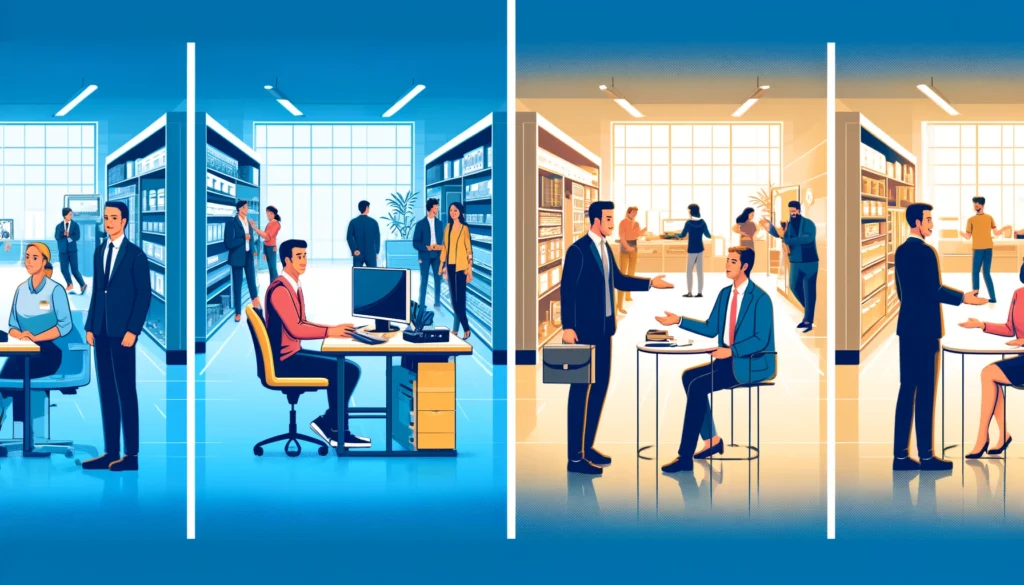Connecting Employee Experience to Customer Experience: Monetizing the Value for Business Growth

In today’s dynamic business environment, the intrinsic link between Employee Experience (EX) and Customer Experience (CX) is becoming increasingly recognized. Organizations that understand and leverage this synergy are better positioned to create sustainable value, enhance business performance, and achieve growth. This article explores how businesses can connect EX to CX and monetize this value to drive profitability, customer loyalty, and competitive advantage.
Understanding the Connection Between Employee Experience (EX) and Customer Experience (CX)
The relationship between EX and CX is straightforward: engaged and satisfied employees are more likely to provide exceptional service to customers, leading to higher customer satisfaction, loyalty, and advocacy. Conversely, disengaged employees can negatively impact customer interactions, eroding trust and diminishing the overall customer experience.
Research shows that organizations with highly engaged employees outperform their competitors in customer satisfaction metrics. Here’s how EX drives CX:
1. Employee Engagement Drives Customer Engagement:
Engaged employees are more likely to exceed customer expectations, showing enthusiasm and a problem-solving mindset that enhances customer engagement.
2. Customer-Centric Culture Starts with Employees:
When employees feel valued and aligned with the company’s mission, they are more likely to embody organizational values, enhancing customer interactions.
3. Employee Well-being Impacts Customer Perception: Employees who experience well-being at work are more likely to create positive customer experiences, fostering trust and loyalty.
Monetizing the Value of Connecting EX to CX
Monetizing the connection between EX and CX involves understanding how investments in employee experience lead to measurable financial outcomes:
1. Increased Customer Retention and Loyalty:
Engaged employees who provide excellent service directly contribute to customer retention, reducing churn rates. Higher retention rates lower customer acquisition costs, increasing profitability.
2. Enhanced Brand Reputation and Advocacy:
Satisfied customers are more likely to become brand advocates. This positive advocacy reduces marketing costs and boosts sales. When employees deliver consistently great experiences, they build a strong brand reputation.
3. Improved Revenue and Profit Margins:
Companies that excel in EX and CX outperform in revenue growth and profit margins. Engaged employees contribute to higher sales through better service, upselling, and cross-selling opportunities.
4. Reduced Operational Costs:
Engaged employees tend to stay longer, reducing turnover and associated hiring and training costs. Higher engagement also results in fewer errors and complaints, reducing service recovery costs.
5. Higher Customer Net Promoter Score (NPS):
NPS is a critical metric for customer loyalty. Organizations that align EX with CX often see a positive impact on their NPS, leading to increased revenue and reduced acquisition costs.
Deficiencies in Current Employee Engagement Measurement Systems
Despite the clear connection between EX and CX, many organizations face challenges in accurately measuring and enhancing employee engagement. Traditional employee engagement measurement systems often have the following deficiencies:
1. Limited Frequency and Real-Time Insights:
Many organizations rely on annual or semi-annual engagement surveys, which only capture a snapshot of employee sentiment at a specific moment. These infrequent surveys miss real-time insights and fail to identify issues that may arise between surveys.
2. Lack of Context and Depth:
Traditional surveys often focus on general questions about job satisfaction, leadership, and workplace environment. They lack depth in understanding the underlying drivers of engagement, such as personal values, team dynamics, and specific challenges employees face.
3. Low Response Rates and Bias:
Engagement surveys often suffer from low response rates, and the data collected can be biased due to the format or timing of the survey. Employees may feel pressured to provide positive feedback or may not fully express their concerns.
4. One-Size-Fits-All Approach:
Many engagement tools use a standardized approach that does not account for the unique needs and characteristics of different departments, teams, or employee segments. This limits the effectiveness of the insights and recommendations provided.
5. Inadequate Actionable Insights:
Traditional engagement measurement tools often provide high-level data without actionable insights. Managers may struggle to translate survey results into specific, targeted actions that can drive real change.
How AI Can Enhance Employee Engagement Measurement and Impact CX
Artificial Intelligence (AI) offers a powerful solution to overcome the limitations of traditional engagement measurement systems. By leveraging AI, organizations can gain deeper, real-time insights into employee sentiment and engagement drivers, leading to more effective strategies that enhance both EX and CX. Here’s how AI can help:
1. Real-Time Sentiment Analysis:
AI-powered tools can analyze real-time data from multiple sources, such as emails, chat messages, and social media platforms, to gauge employee sentiment continuously. This allows organizations to identify and address potential issues before they escalate, leading to a more proactive approach to engagement.
2. Personalized Employee Insights:
AI can segment employees based on various factors such as role, department, tenure, and engagement levels. This allows for more personalized insights and targeted interventions that address specific needs and challenges, rather than using a one-size-fits-all approach.
3. Predictive Analytics for Proactive Interventions:
AI uses predictive analytics to identify patterns and trends that may indicate potential disengagement or turnover risks. This allows HR teams to take proactive steps to address issues, such as implementing targeted retention strategies or offering personalized development opportunities.
4. Natural Language Processing (NLP) for Deep Analysis:
NLP techniques enable AI to analyze open-ended responses from employee surveys, feedback forms, and other communication channels. This provides deeper insights into the emotions, concerns, and motivations of employees, allowing for more nuanced and effective engagement strategies.
5. Automated Pulse Surveys and Feedback Loops:
AI can automate pulse surveys and continuous feedback loops, providing real-time insights into employee sentiment and engagement. This allows organizations to maintain an ongoing dialogue with employees and quickly adapt to changing needs and expectations.
6. Enhanced Decision-Making with Data Integration:
AI integrates data from various HR systems (such as performance management, learning and development, and compensation) to provide a holistic view of employee engagement. This comprehensive approach allows for data-driven decision-making and alignment of HR strategies with overall business objectives.
7. Driving a Culture of Continuous Improvement:
AI enables organizations to foster a culture of continuous improvement by providing real-time feedback and insights that encourage ongoing development and engagement. This aligns with the organization’s commitment to enhancing both employee and customer experiences.
How AI Can Connect Employee Engagement to Customer Engagement and Advocacy
Beyond improving employee engagement measurement, AI can play a critical role in directly connecting employee engagement to customer engagement and advocacy. Here’s how AI can bridge this gap:
1. Customer Sentiment Analysis Linked to Employee Actions:
AI can analyze customer feedback and sentiment data alongside employee performance data. By understanding how specific employee actions, behaviors, or engagement levels influence customer satisfaction and advocacy, organizations can identify high-impact areas for improvement.
2. Creating Employee-Customer Interaction Models:
AI can build models that analyze patterns in employee-customer interactions. For example, by using machine learning algorithms, AI can identify which types of employee behaviors or communication styles lead to positive customer experiences and which do not. This insight allows organizations to train employees more effectively to foster better customer relationships.
3. Personalized Coaching and Training:
AI can provide personalized coaching and training programs for employees based on both employee engagement levels and customer feedback. For example, if certain employees consistently receive high customer satisfaction scores, AI can analyze their behaviors and suggest similar practices for other employees, creating a cycle of continuous improvement.
4. Predicting Customer Advocacy through Employee Engagement Data:
AI can use employee engagement data to predict potential customer advocacy outcomes, such as likelihood to recommend or repeat purchase rates. By understanding which engagement factors are most correlated with positive customer outcomes, organizations can focus on strengthening those areas to drive both employee satisfaction and customer loyalty.
5. Dynamic Matching of Employees to Customer Segments:
AI can dynamically match employees to customer segments based on their strengths, engagement levels, and expertise. For instance, employees who are highly engaged and excel in problem-solving could be assigned to handle high-value or complex customer accounts, ensuring a better customer experience and increasing the likelihood of customer advocacy.
6. Automated Feedback Loops between Employees and Customers:
AI can facilitate automated feedback loops where employees receive real-time feedback from customers and vice versa. This creates a transparent environment where employees can understand the direct impact of their actions on customer experience and adjust accordingly.
7. Enhancing Customer Experience with AI-Driven Employee Tools:
AI-driven tools, such as chatbots and virtual assistants, can support employees in delivering better customer experiences by providing instant access to customer data, preferences, and previous interactions. This ensures a more personalized and effective service, leading to higher customer satisfaction and advocacy.
Strategies to Align Employee Experience with Customer Experience
To effectively connect EX to CX and monetize its value, organizations need to implement strategies that foster a seamless relationship between employees and customers:
1. Foster a Customer-Centric Culture:
Embed a customer-centric mindset across all levels. Encourage employees to see how their work impacts customer satisfaction and recognize contributions that enhance CX.
2. Invest in Employee Training and Development:
Equip employees with the skills needed to deliver exceptional customer service. Continuous training programs focused on service excellence enhance both EX and CX.
3. Empower Employees with Autonomy and Resources:
Empower employees to make decisions that benefit CX. Providing tools and authority to solve problems quickly can lead to higher customer satisfaction.
4. Utilize Data and Analytics:
Use data analytics to understand the link between EX and CX. Leverage employee feedback and customer insights to improve both experiences.
5. Create a Strong Employee Value Proposition (EVP):
A compelling EVP helps attract and retain talent, leading to a more engaged workforce. Engaged employees are more likely to deliver positive customer experiences.
6. Align Goals and Incentives:
Align employee goals and incentives with CX outcomes. Linking performance metrics and rewards to EX and CX encourages employees to own their role in delivering exceptional experiences.
Conclusion
Connecting employee experience to customer experience is not just about strategic alignment; it’s a business imperative that drives financial success. By addressing the deficiencies in traditional engagement measurement systems with AI-driven solutions, organizations can gain deeper insights, act more proactively, and enhance both EX and CX. AI also plays a pivotal role in directly connecting employee engagement to customer advocacy by analyzing and predicting the impact of employee actions on customer outcomes.






Responses